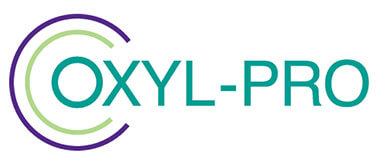Disinfectants are essential in agriculture for protecting livestock from diseases and outbreaks.
Because farms may contain different species of livestock, any disinfectant you use should cover as many applications as possible.
In some instances, this will be about focusing on, and targeting, specific pathogens.
However, disinfectants can also offer protection against the unexpected.
There are several important factors to consider:
- How fast-acting, versatile and effective against bacteria your disinfectant will be, and
- Where you should be applying it.
Here, we are looking at where you should be using disinfectants in an agricultural setting.
Stables, barns and barn equipment
Disinfecting surfaces helps prevent the spread of diseases, and this applies to stables and barns.
Pathogens have the potential to slip through your protective measures, so regular cleaning and disinfection of these areas is essential.
Horses and other livestock interact with each other, with humans and with farm equipment on a daily basis. Therefore, your focus must be on hand held and other farm equipment as well as on walls, roofs and surfaces.
Also, remember to include items such as gates, fences and doors in your cleaning and disinfecting routine.
Layers of organic material, manure, dirt and dust can build up quickly in this environment, so your priority, before disinfecting, must be to clean these surfaces.
Without a cleaning routine, the risk is that a build-up of dirt will act as a barrier, protecting bacteria from any disinfectant.
This should be a multi-step process, beginning with scraping, clearing and sweeping away dry debris.
Following this, wash areas thoroughly with a detergent, rinse them thoroughly before allowing them to dry. Be sure to clean all the various seams, corners and cracks.
Once you have a dry barn or stable, you can then move onto the disinfecting stage. Make sure you dilute the concentration to the manufacturer’s specifications and, when spraying, wear appropriate personal protective equipment (PPE).
Drinking facilities and tank farm cleaning
While it is vital to keep surfaces in farm buildings clean and disinfected, it is also critical to ensure that there is a safe water supply for your farm animals, and your farm.
As a basic precaution, you should always protect any water sources on the farm from animal carcasses and manure.
Keep a regular schedule of cleaning and maintenance of water troughs and tanks, and clean buckets, troughs and cups daily or weekly.
Disinfect your water sources at least twice a year.
Biofilm will often accumulate, despite regular cleaning, where water rests in tanks or pipes, or where you have untreated mains water.
It can be difficult to get rid of once it has established itself, and it can reduce the efficiency of disinfectants.
If you leave biofilm untreated, it acts as a framework for microbes, attracting and protecting them.
Therefore, you need to treat water supplies and farm tanks with a disinfectant that will remove biofilms and re-sanitise your system.
You will need to isolate your water lines, add a suitable concentration of your disinfectant to the tank or system, let it act, then flush the system to clear it. You can then add the appropriate amount of disinfectant to this fresh supply to ensure its safety.
Irrigation equipment
Where you have irrigation equipment for plant equipment, this can also be a source of biofilm build-up, and therefore contamination.
It is possible for mould spores (fusarium) to spread throughout an entire greenhouse through water recirculation systems.
Therefore, you should add a disinfectant to sprinklers, top feeders, ebb and flow tables and other essential irrigation equipment.
It is vital that the disinfectant you use is long-lasting but will not leave behind any harmful residues.
Machinery and farm equipment
As we have already mentioned in the section about cleaning stables and barns, equipment can be a major source of transmission of disease and infection, simply because so many different elements interact with it.
Certain equipment, in particular, is subject to stringent hygiene requirements, so it is crucial to disinfect this regularly and routinely.
This equipment includes:
- Milk processing equipment
- Storage containers for food and crops
- Brewing equipment
- Hoof-care tools.
The most effective disinfectant methods here are to first clean the equipment or machinery carefully, then apply a disinfectant either using a fine-mist spray, with a cloth, or by immersing it in a solution.
Eggs
Certain bacteria can cling to the shells of eggs, including Salmonella, E coli and Shigella.
Therefore, it is important that you decontaminate and disinfect your farm eggs. You can do this by either immersing them briefly in a recommended disinfectant solution, or by using a spray.
Cold rooms and storage tanks
Where you have specific spaces for storing produce for maturing, such as meat and cheese, you must ensure that you decontaminate them.
In these areas, airborne bacteria and mould spores can spread, and if you do not control them, they can spread rapidly.
The most quick and effective way of decontaminating the air in cold rooms and storage tanks is by either adding a disinfectant to humidifier water, or by applying it as a fine mist using a fogging machine.
How to choose an agricultural disinfectant
For disinfecting agricultural buildings, equipment, machinery and water supplies, you should use a specially-formulated disinfectant that will not harm livestock and is food-safe.
- Oxyl-Pro Clean is a highly effective biofilm remover for water supplies
- Oxyl-Pro Pollo is a disinfectant for livestock and is DEFRA-approved for use against foot and mouth
- Oxyl-Pro Agro is an effective decontaminant for use in irrigation and with farm equipment and machinery.
For more information about the Oxyl-Pro product range, please complete our contact form, call us on +44 1606 851 782, or send an email to enquiries@oxylpro.com

